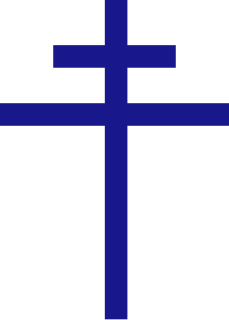 W
W"Tautiška giesmė" is the national anthem of Lithuania, also known by its opening words "Lietuva, Tėvyne mūsų" and as "Lietuvos himnas". The music and lyrics were written in 1898 by Vincas Kudirka, when Lithuania was still part of the Russian Empire. The fifty-word poem was a condensation of Kudirka's conceptions of the Lithuanian state, the Lithuanian people, and their past. Shortly before his death in 1899, the anthem was performed for Lithuanians living in Saint Petersburg, Russia.
 W
WSaint Casimir Jagiellon was a prince of the Kingdom of Poland and of the Grand Duchy of Lithuania. Second son of King Casimir IV Jagiellon, he was tutored by Johannes Longinus, a Polish chronicler and diplomat. After his elder brother Vladislaus was elected as King of Bohemia in 1471, Casimir became the heir apparent. At the age of 13, Casimir participated in the failed military campaign to install him as King of Hungary. He became known for his piety, devotion to God, and generosity towards the sick and poor. He became ill and died at the age of 25. He was buried in Vilnius Cathedral and his cult grew. His canonization was initiated by his brother King Sigismund I the Old in 1514 and the tradition holds that he was canonized in 1521.
 W
WThe coat of arms of Lithuania, consisting of an armour-clad knight on horseback holding a sword and shield, is also known as Vytis.
 W
WThe Columns of Gediminas or Pillars of Gediminas are one of the earliest symbols of Lithuania and its historical coats of arms. They were used in the Grand Duchy of Lithuania, initially as a rulers' personal insignia, a state symbol, and later as a part of heraldic signs of leading aristocracy.
 W
WLithuanian cross crafting is a traditional Lithuanian art of crafting crosses. The making of altars and crosses is an important part of Lithuanian culture. Lithuanian traditional crosses are part of the people's Roman Catholic religion. Approximately since Lithuania became a part of the Russian Empire in the 19th century, these crosses have become a symbol of the Lithuanian people.
 W
WDaina is the traditional name of vocal folk music in the Baltic languages, and is preserved in Lithuania and Latvia. Lithuanian dainos are often noted not only for their mythological content, but also for relating historical events.
 W
WThe flag of Lithuania consists of a horizontal tricolor of yellow, green, and red. It was adopted on 25 April 1918 during Lithuania's first period of independence from 1918 to 1940, which ceased with the occupation first by Soviet Russia and Lithuania's annexation into the Soviet Union, and then by Germany (1941–1944). During the post-World War II Soviet occupation, from 1945 until 1989, the Soviet Lithuanian flag consisted first of a generic red Soviet flag with the name of the republic, then changed to the red flag with white and green bands at the bottom.
 W
WGediminas' Tower is the remaining part of the Upper Castle in Vilnius, Lithuania.
 W
WThe Grunwald Swords were a mocking "gift" sent by Ulrich von Jungingen, the Grand Master of the Order of Teutonic Knights, to King Władysław II Jagiełło of Poland and Grand Duke Vytautas of Lithuania on 15 July 1410, just before the Battle of Grunwald (Tannenberg). The gift, a pair of simple bare swords, was a symbolic invitation to engage Jungingen's forces in battle. After the Polish-Lithuanian victory, both swords were taken as a war trophy by King Władysław II to Kraków, Poland's capital at the time, and placed in the treasury of the Royal Wawel Castle.
 W
WThe Patriarchal cross is a variant of the Christian cross, the religious symbol of Christianity, and also known as the Cross of Lorraine. Similar to the familiar Latin cross, the patriarchal cross possesses a smaller crossbar placed above the main one so that both crossbars are near the top. Sometimes the patriarchal cross has a short, slanted crosspiece near its foot. This slanted, lower crosspiece often appears in Byzantine Greek and Eastern European iconography, as well as in other Eastern Orthodox churches. In most renditions of the Cross of Lorraine, the horizontal bars are "graded" with the upper bar being the shorter, though variations with the bars of equal length are also seen.
 W
WThe Pensive Christ is a subject in Christian iconography depicting a contemplating Jesus, sitting with his head supported by his hand with the Crown of Thorns and marks of his flagellation. It is, therefore, a picture of Jesus shortly before his crucifixion, although more an andachtsbild or devotional subject than intended to show an actual moment in the narrative of the Passion of Christ. The Pensive Christ is much more common in sculpture than in painting, where the similar Man of Sorrows is more often depicted.
 W
WRuta graveolens [L. strong smelling rue], commonly known as rue, common rue or herb-of-grace, is a species of Ruta grown as an ornamental plant and herb. It is native to the Balkan Peninsula. It is now grown throughout the world in gardens, especially for its bluish leaves, and sometimes for its tolerance of hot and dry soil conditions. It is also cultivated as a medicinal herb, as a condiment, and to a lesser extent as an insect repellent.